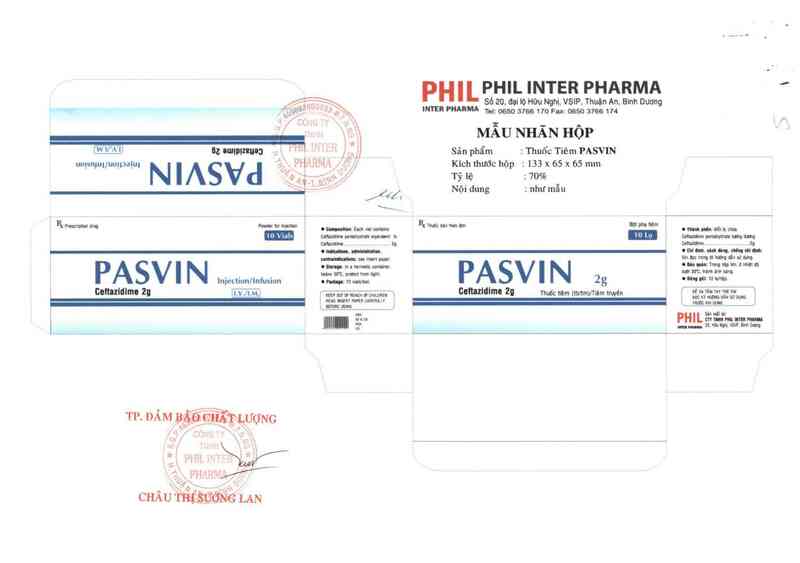
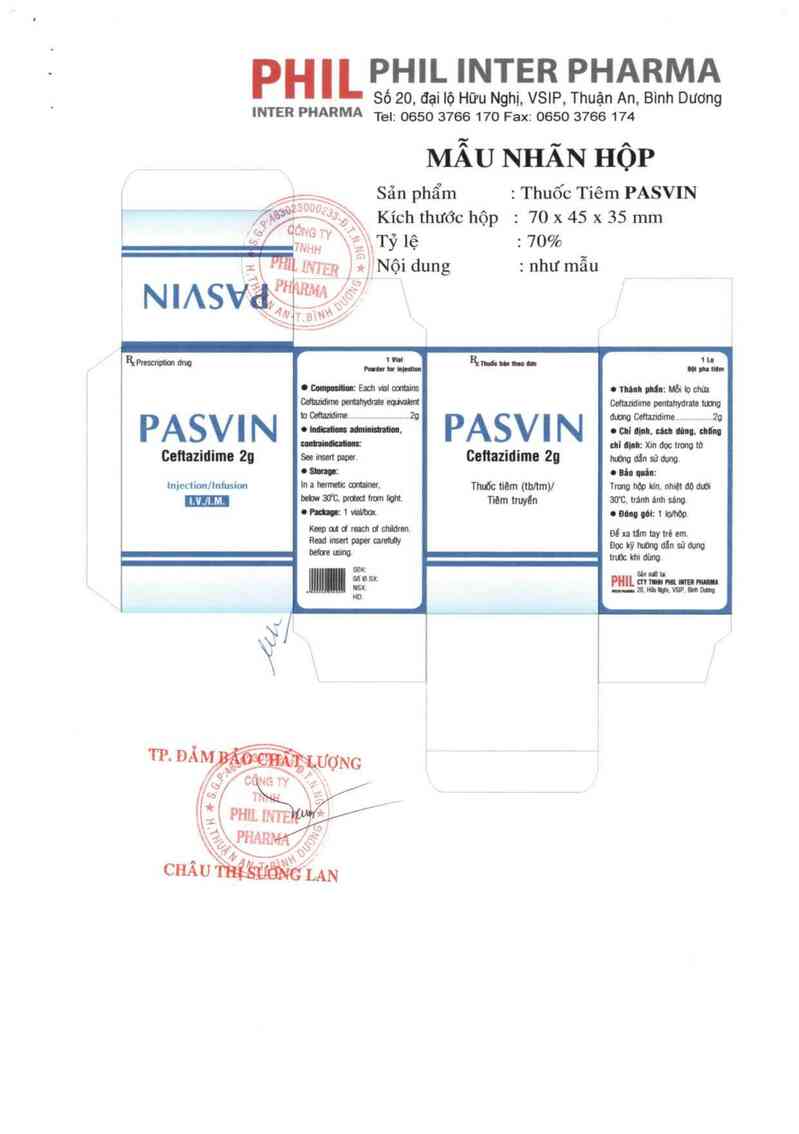
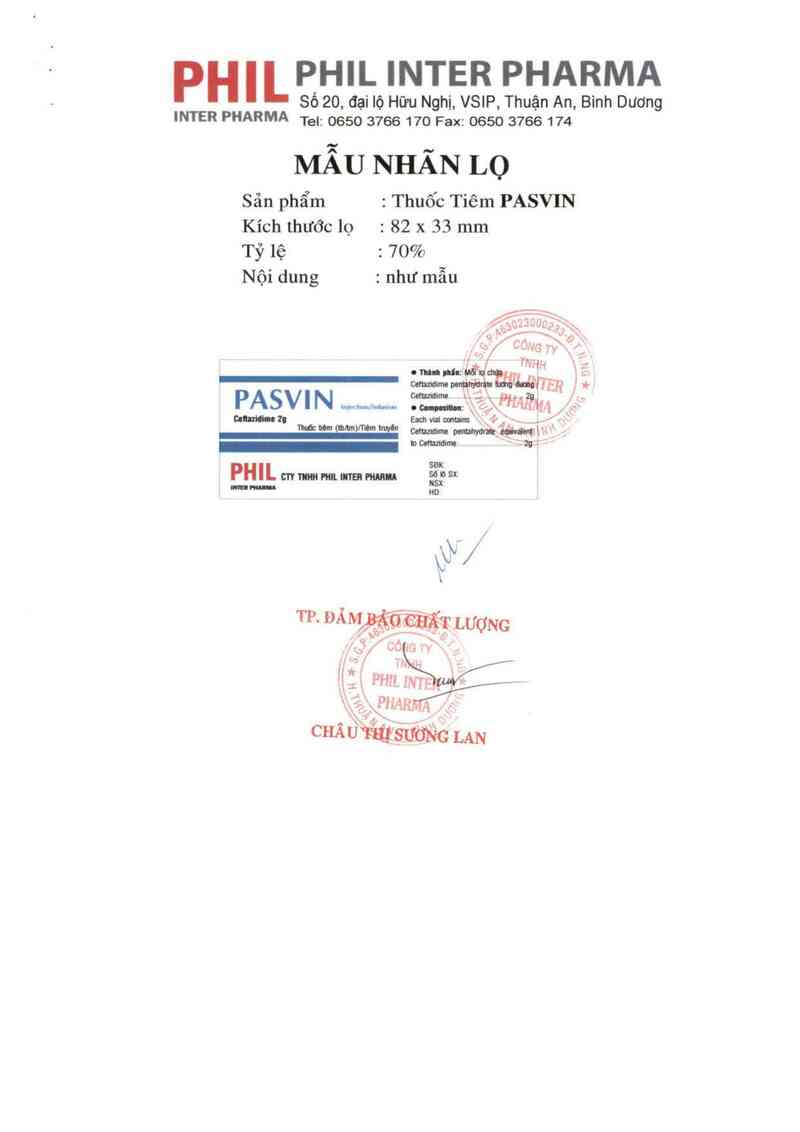
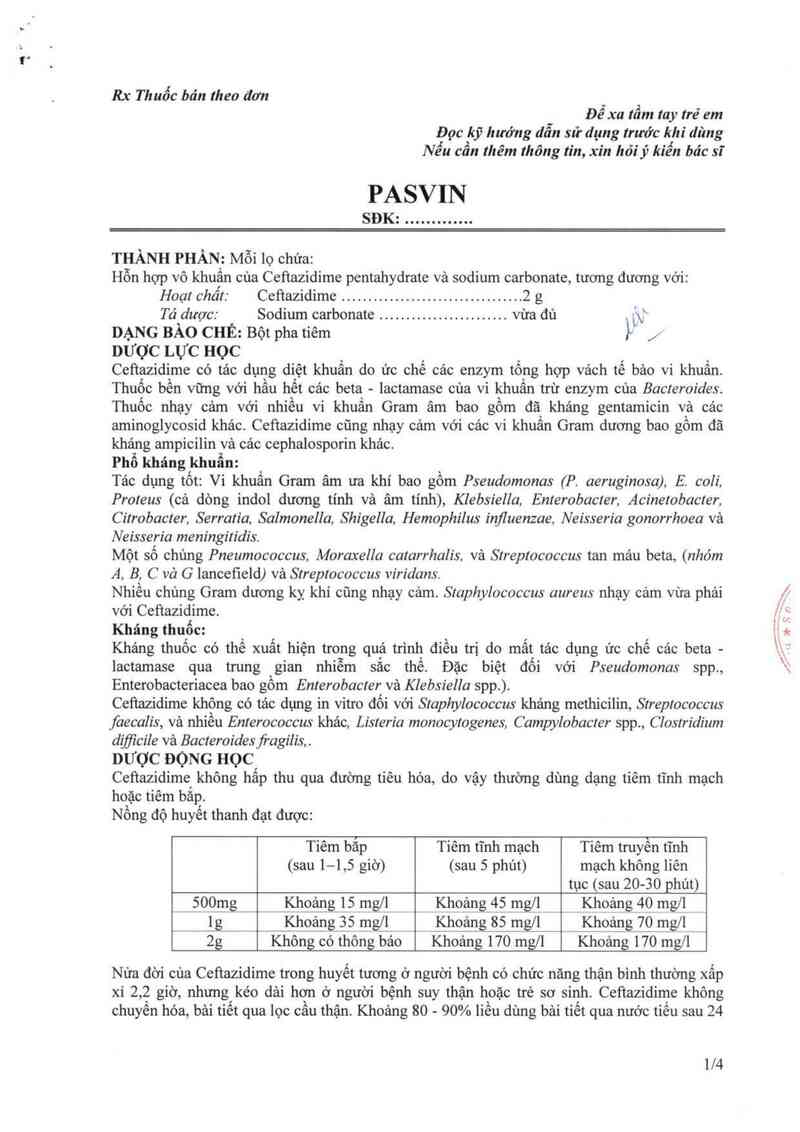
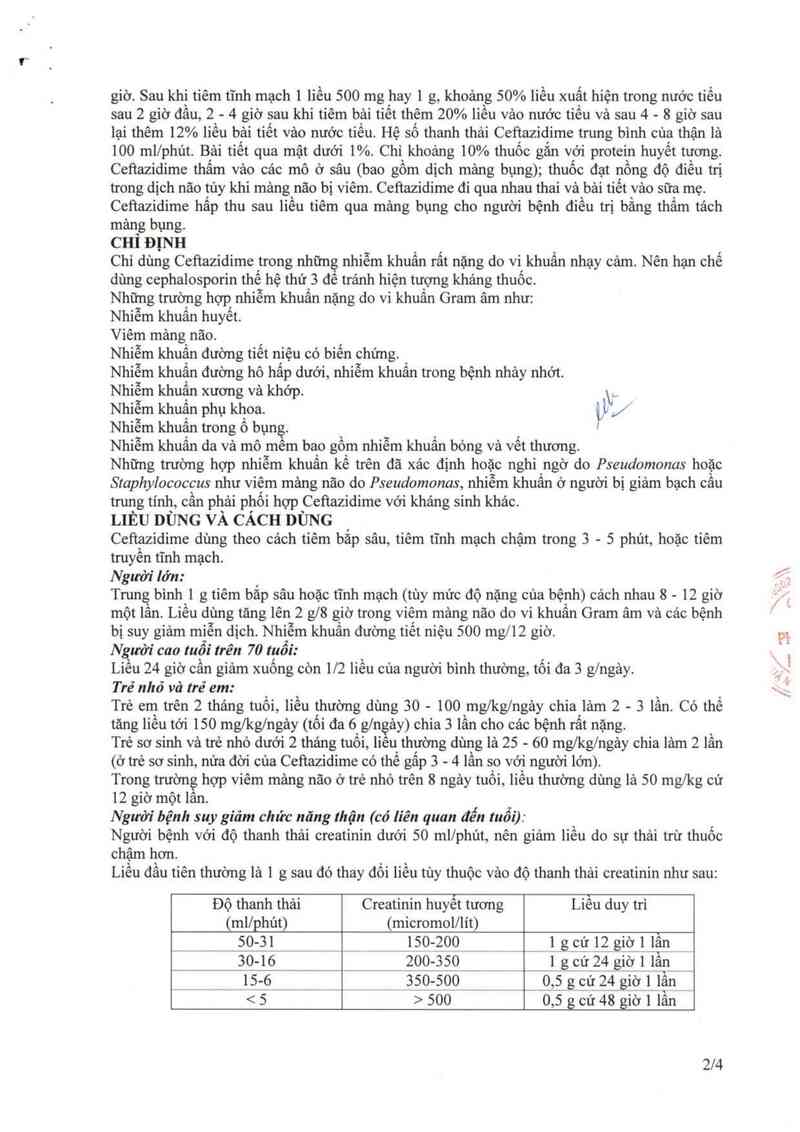
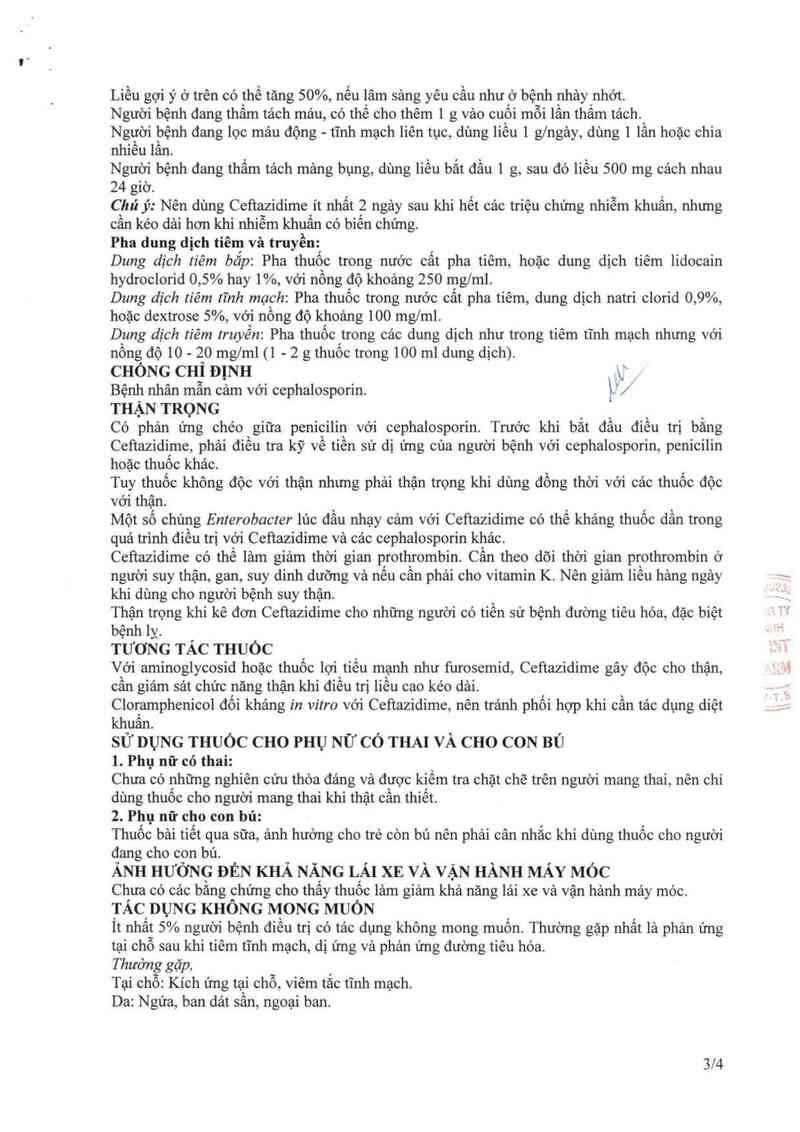
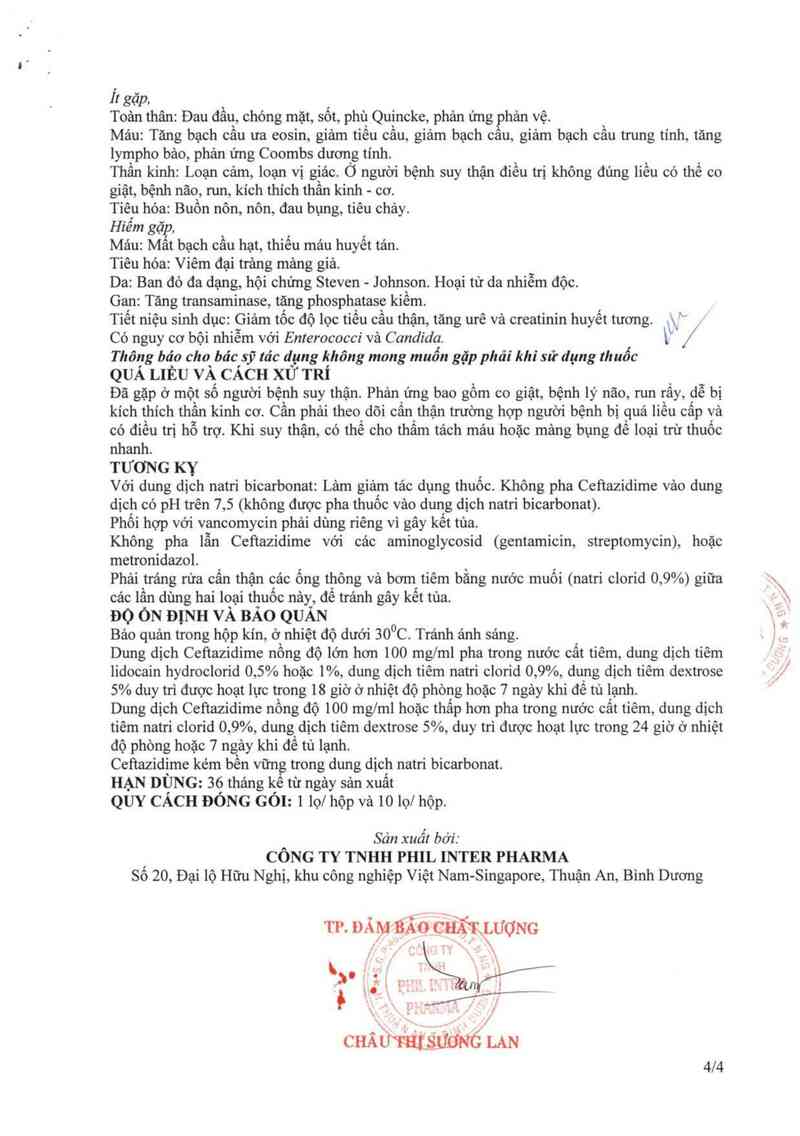
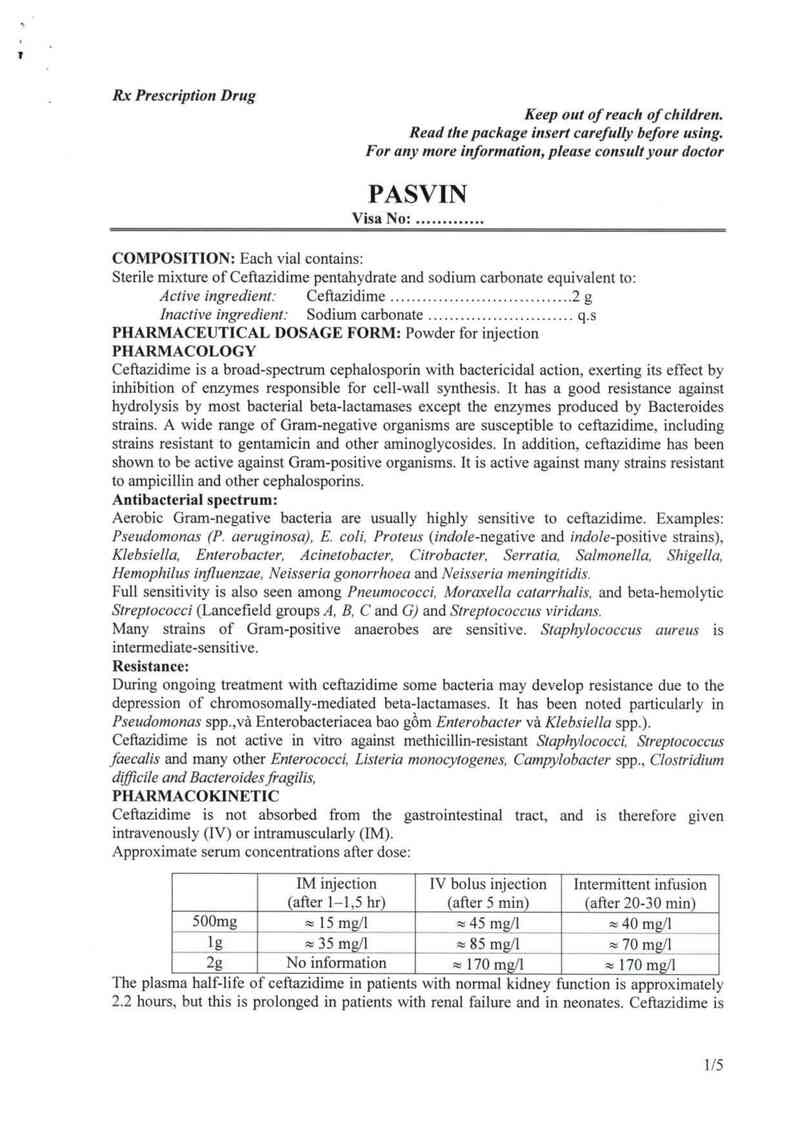
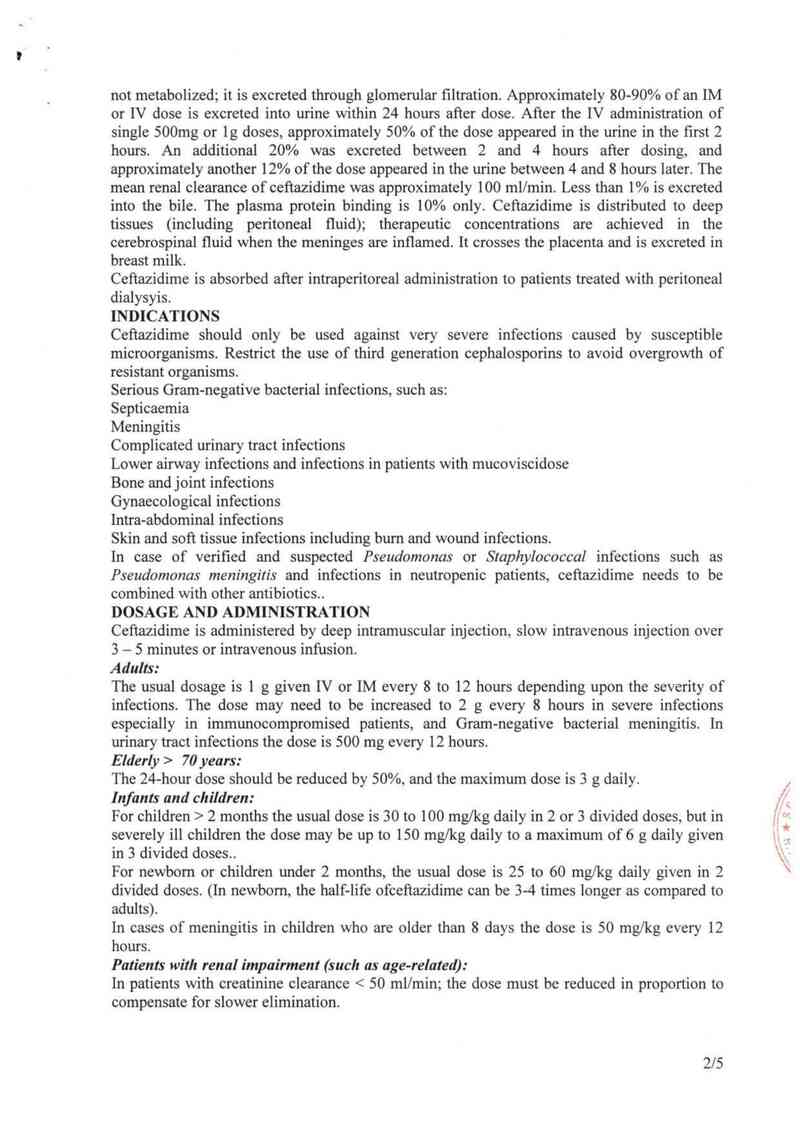
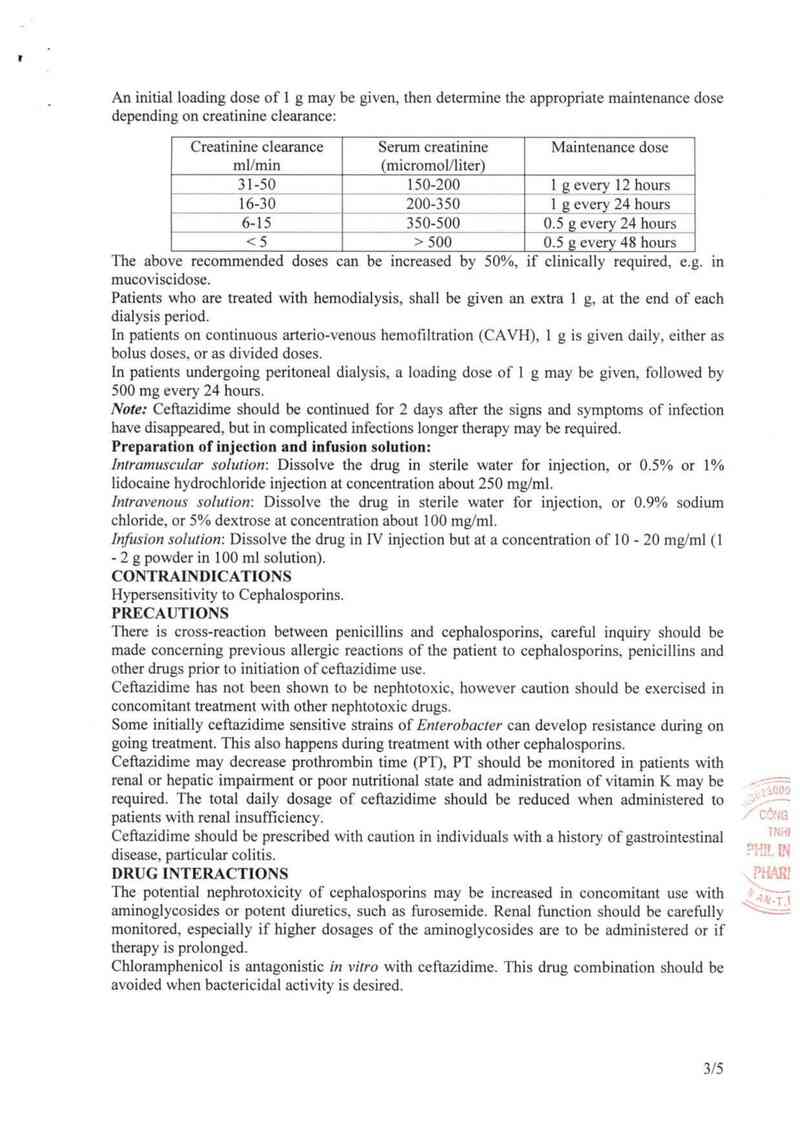
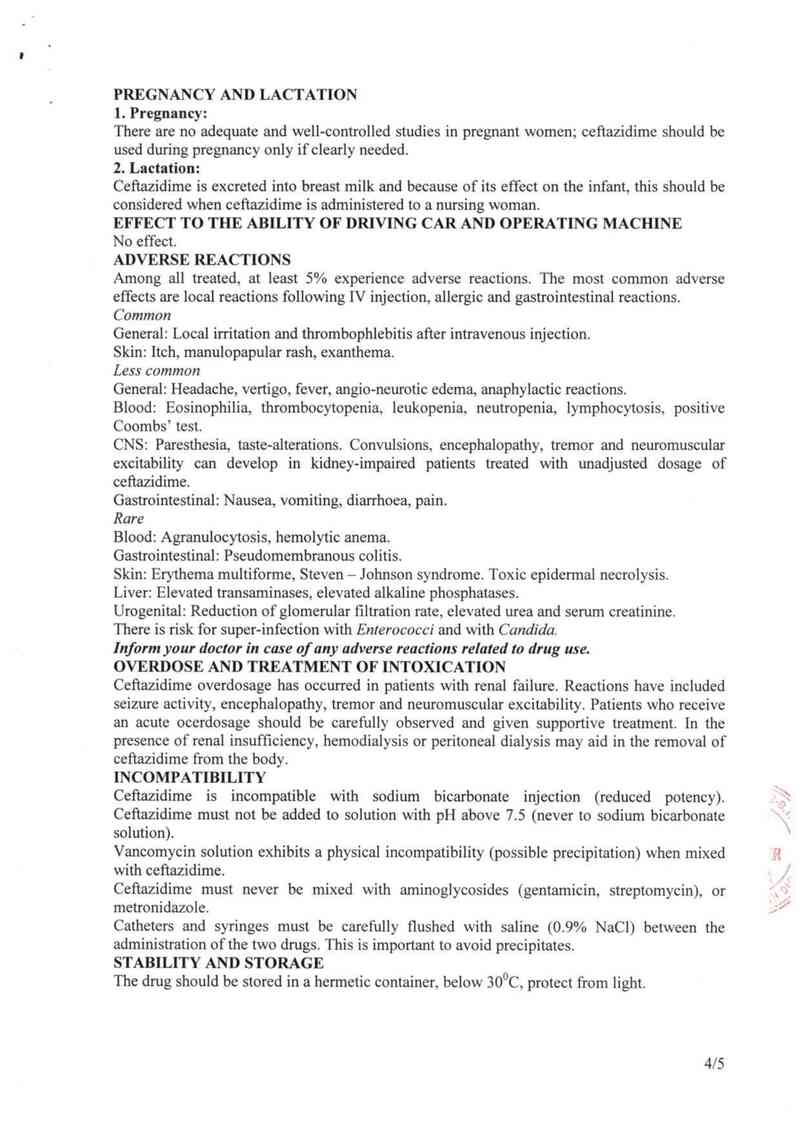
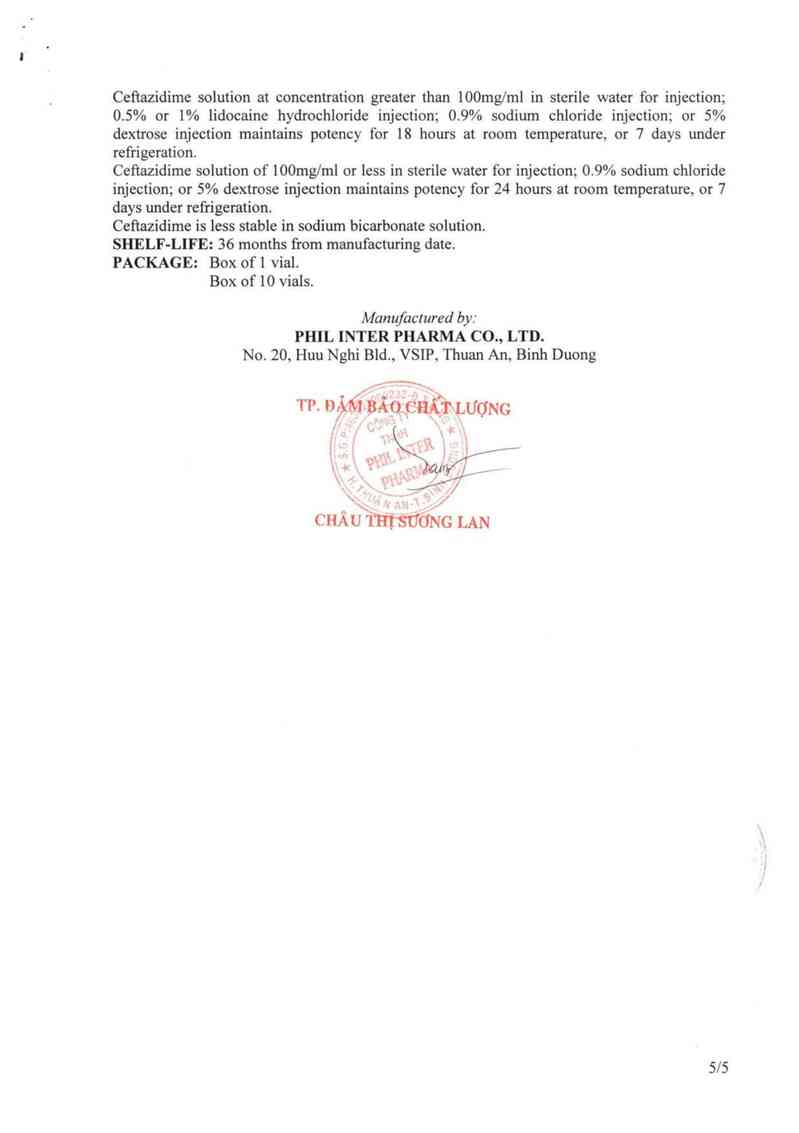
PH | L PHIL INTER PHARMA
sò zo dai lo Hửu Nghi VSIP Thuận An Bình Dương
'm WRW Tel: 0650 3766 wo Fax: 0650 3766 114
MẨU NHÃN HÔP
.,J
ũz ommmm ;'\ ~ › ' ;__ ' _ sa… phẩm : Thuốc Tiêm PASVIN
uogsrụuưumuaịm Ổcớị\4 pH ẳLRMA/à Kích thước hộp : 133 x 65 x 65 mm
N lASVd “ .T W T… …
. ì*—²²' Nội dung : như mẫu
fỳýỳỳỳ ___ _ _ 1f____ _ … ___ _…
Ề Ẩm… meth | _ … R:mm…n aomum… `
ì ỳ E.……“*…M…Tạ … m I
1 ' WM _ . .. u I
“1 ' ouuu.… Ỉ
\ ’ …mmwơ ›
ow:mmumt …v.
m. .
P A SV I N lnieclion/lnfusion ’ mzẾm.m P A S v I N 2g '
Coftuldlmo 2l |_ v || M —`Ị … GOMIỈỦỈỈI'IO 2o Tmỏc mm (leĩưm nwịn \
ầWfflRỤỈFW MMLV ì
.uuu
zu
onlm.th. mun
mủnmuúhhodna'túmo
oIhducĩmmmơmtla
mưc.nmnmum
omutmmu.
ưquuuvmêaa
mđmulusúm J
m…… __
Sinnílbì
PH | L PHIL INTER PHARMA
Số 20, đại lộ Hữu Nghị, VSIP, Thuận An, Bình Dương
lNTER PHARMA Tel: 0650 3766 170 Fax: 0650 3766 174
MẨU NHÃN HỘP
_ _ _ __ ___ /ẫỊỂẺJO\\ Sãn phẩm :Thuốc Tiêm PASVIN
[ 7185°²,_WĂ Kích thước hộp : 70 x 45 x 35 mm
x ,n’jij \\Ệ`ỵTỷ lệ :70%
_=[ pỂLINTER ẮJ-²Nộidung :nhưmẫu
,, * =~ L
…
um…-
ommmmmam omnlúímllũibohín
……mmW …irnepmtammm
b… .............................. zo mcgamm _________________ 2g
PASVIN …… PASVIN ………
… _ eilMandoctmlutb
Gollazidime 2u s… … m. Collazithme 2u … dn 6 m.
0… Olildư:
lnjedion/lnfusion In a … …. Thức tiệm (tbllm)l Trưa Mo Hn. nhiu 40 Mĩ
…mehưnm Tiêmtruyén m.…mnam
ohủpzlvhllhx °MWIÌW~
M.mdde Đdxaũm triem.
“"MWW o…ỹnnẵuănsìdum
hehus'nq.
am
snsx
_ usx
ID
PH | L PHIL INTER PHARMA
Số 20. đại lộ Hữu Nghị, VSIP, Thuận An, Bình Dương
'NTER PHARMA Tel10650 3766 170 Fax: 0650 3766 174
MAU NHAN LỌ
Sản phẩm : Thuốc Tiêm PASVIN
Kích thước lọ : 82 x 33 mm
Tỷ lệ : 70%
Nội dung : như mẫu
r-ạfạ CÔ vs \\Ểj Ổ_
_, J/ frv=w Y 6 \lỉ
o mu IIÍII ữJ W
cmanmu TF_RẨ
PASVIN …… ……____ANHW < Ồ
Ỹịzl
u…u Eamv'nloumm~ \ _/__,
\ Mmmmgmmm cm… WMMỉủWỂ ,
_ °…“- " W
SĐK
PHIL…mmmmnww ỂỔSXWX
m… HD“
ịịỜụ/
TP. ĐẨMẤỄEHỂT LƯỢNG
ADỄJ/ vỒự, …
’3/ HY '_
Ị(Ị Ị/Ầ PHỦ INTỈ", %. …
m.pr
CHẨ UỦSIKING LAN
Rx Thuốc bán theo đơn `
_ Để xa tâm tay trẻ em
Đọc kỹ hướng dân sử dụng 1ch khi dùng
Nếu cần thêm thông tin, xin ho’i ý kiến bảc sĩ
PASVIN
SĐK: .............
THÀNH PHÀN_: Mỗi lọ chứa:
Hỗn hợp vô khuân cùa Ceftazidime pentahydrate vả sodium carbonate, tương đương với:
Hoạt chất: Ceftazidime .................................. 2 g
T á dược: Sodium carbonate ........................ vừa đủ Ổ)
DẠNG BÀO CHẾ: Bột pha tiêm i /
DƯỢC LỰC HỌC
Ceftazidime có tảc dụng diệt khuẩn do ức chế các enzym tổng hợp vách tế bảo vi khuẩn.
Thuốc bền vững với hầu hết các beta — lactamase của vi khuấn trừ enzym của Bacteroides.
Thuốc nhạy cảm với nhiều vi khuẳn Gram âm bao gồm đã khảng gentamicin và các
aminoglycosid khảc. Ceftazidime cũng nhạy cảm với cảc vi khuấn Gram dương bao gồm đã
kháng ampicilin vả cảc cephalosporin khảc.
Phổ kháng khuẩn:
Tác dụng tốt: Vi khuẩn Gram âm ưa khí bao gồm Pseudomonas (P. aeruginosa), E. coIi,
Proteus (cả dòng indol dương tính và âm tính), Klebsiella, Enterobacter, Acinetobacter,
Citrobacter, Serratia, Salmonella, Shigella, Hemophilus injluenzae, Neisseria gonorrhoea vả
Neisseria meningilidis.
Một số chùng Pneumococcus, Moraerla catarrhalis. vả Streplococcus tan máu beta, (nhóm
A, B, C và G lancefield) vả Streptococcus viridans.
Nhiều chùng Gram dương kỵ khí cũng nhạy cảm. Staphylococcus aureus nhạy cảm vừa phải
với Ceftazidime.
Kháng thuốc:
Khảng thuốc có thể xuất hiện trong quá trình điều trị do mất tảc dụng ức chế các beta -
lactamase qua trung gian nhiễm sắc thể. Đặc biệt đối với Pseudomonas spp.,
Enterobacteriacea bao gổm Enlerobacter vả Klebsiella spp. ).
Ceftazidime không có tảc dụng … vitro đổi với Staphylococcus kháng methicilin, Streprococcus
faecalis, và nhiều Enterococcus khảc, Listeria monocytogenes, Campylobacter spp., CIostridíum
d fflczle vả Bacleroidesfiagilis,.
DƯỢC ĐỘNG HỌC
Ceftazidime không hấp thu qua đường tiêu hóa, do vậy thường dùng dạng tiêm tĩnh mạch
hoặc tiêm bắp
Nồng độ huyết thanh đạt được:
Tỉêm bắp
(sau 1—1,5 giờ)
Tiêm tĩnh mạch
(sau 5 phủt)
Tiêm truyền tĩnh
mạch không liên
tục (sau 20-30 phút)
500mg Khoảng 15 mg/l Khoảng 45 mg/l Khoảng 40 mg/l
lg thảng_ềã Lngj_l_ Khoáng 85 mgll Khoảng 70 mgfl…
2g Không có thông báo Khoảng 170 mg/l Khoảng 170 mg/l
Nửa đời cùa Ceftazidime trong huyết tương ở người bệnh có chức năng thận bình thường xấp
xỉ 2, 2 giờ, nhưng kéo dải hơn ở người bệnh suy thận hoặc trẻ sơ sinh. Ceftazidime không
chuyến hóa, bải tiết qua lọc cầu thận. Khoảng 80- 90% liều dùng bải tiết qua nước tiểu sau 24
1/4
giờ. Sau khi tiêm tĩnh mạch ] liều 500 mg hay 1 g, khoảng 50% liếu xuất hiện trong nước tiếu
sau 2 giờ đầu, 2— 4 giờ sau khi tiêm bải tiết thêm 20% liếu vảo nước tiếu vả sau 4- 8 giờ sau
lại thêm 12% liếu bải tiết vảo nước tiếu. Hệ số thanh thải Ceftazidime trung bình cùa thận iả
100 ml/phút. Bải tiết qua mật dưới 1% Chỉ khoảng 10% thuốc gắn vởi protein huyết tương.
Ceftazidime thấm vảo cảc mỏ ở sâu (bao gồm dịch mảng bụng); thuốc đạt nồng độ điều trị
trong dịch não tủy khi mảng não bị viêm. Ceftazidime đi qua nhau thai và bải tiết vảo sữa mẹ.
Ceftazidime hấp thu sau liều tiêm qua mảng bụng cho người bệnh điều trị bằng thẩm tách
mảng bụng.
CHỈ ĐỊNH
Chỉ dùng Ceftazidime _trong những nhiễm khuẩn rất nặng do vi khuần nhạy cảm. Nên hạn chế
dùng cephalosporin thế hệ thứ 3 đê trảnh hiện tượng kháng thuôc.
Những trường hợp nhiễm khuấn nặng do vi khuẩn Gram âm như:
Nhiễm khuẳn huyết.
Viêm mảng não.
Nhiễm khuẩn đường tiết niệu có biến chứng.
Nhiễm khuẩn đường hô hấp dưới, nhiễm khuẩn trong bệnh nhây nhớt.
Nhiễm khuần xương và khớp. \,
Nhiễm khuẩn phụ khoa. ịi ,/
Nhiễm khuẩn trong ổ bụn .
Nhiễm khuấn da và mô mem bao gồm nhiễm khuẩn bỏng và vết thương.
Những trường hợp nhiễm khuấn kế trên đã xảc định hoặc nghi ngờ do Pseudomonas hoặc
Staphylococcus như viêm mảng não do Pseudomonas, nhiễm khuẩn ở người bị giảm bạch câu
trung tính, cần phải phối hợp Ceftazidime với kháng sinh khảc.
LIÊU DÙNG VÀ CÁCH DÙNG
Ceftazidime dùng theo cảch tiêm bắp sâu, tiêm tĩnh mạch chậm trong 3 - 5 phút, hoặc tiếm
truyền tĩnh mạch.
Người lớn:
Trung bình 1 g tiêm bắp sâu hoặc tĩnh mạch (tùy mức độ nặng của bệnh) cách nhau 8 - 12 giờ
một lần. Liều dùng tăng lên 2 g/8 giờ trong viêm mảng não do vi khuấn Gram âm vả các bệnh
bị suy giảm miễn dịch. Nhiễm khuấn đường tiết niệu 500 mg/12 giờ.
Người cao tuểi trên 70 tụổi: _ '
Liêu 24 giờ cân giảm xuông còn 1/2 liêu của người binh thường, tôi đa 3 g/ngảy.
T re nho và trẻ em:
Trẻ em trên 2 thảng tuổi, Iiếu thường dùng 30 - 100 mg/kg/ngảy chia lảm 2- 3 lần. Có thể
tăng liều tới 150 mg/kg/ngảy (tối đa 6 g/ngảy) chia 3 lần cho cảc bệnh rất nặng.
Trẻ sơ sinh và trẻ nhỏ dưới 2 tháng tuồi, liêu thường dùng là 25- 60 mg/kg/ngảy chia lảm 2 lần
(ở trẻ sơ sinh, nửa đời của Ceftazidime có thế gâp 3- 4 lần so với người lớn).
Trong trường hợp viêm mảng não ở trẻ nhỏ trên 8 ngảy tuổi, liều thường dùng là 50 mg/kg cứ
12 giờ một lân.
Người bệnh suy gíảm chức năng thận (có liên quan đểu tuổi):
Người bệnh vởi độ thanh thải creatinin dưới 50 ml/phút, nên giảm liếu do sự thải trừ thuốc
chậm hơn.
Liều đầu tiên thường lả ] g sau đó thay đổi liếu tùy thuộc vảo độ thanh thải creatinin như sau:
Độ thanh thải Creatinin huyết tương Liều duy tri
(ml/phút) (micromol/lít)
__ _ so_31 _ 150-200 lgcg_lz giờ 1 lần
30 16 200-350 1 g cứ 24 giờ 1 lần
15-6 _ sso-soo o,s g_cú 24 giờ 1 lần
< 5 › 500 0,5 g cứ 48 giờ 1 lần
2/4
Liều gợi ý ở trên có thể tăng 50%, nếu lâm sảng yêu cầu như ở bệnh nhảy nhớt.
Người bệnh đang thấm tách máu, có thế cho thêm 1 g vảo cuối mỗi lần thầm tách.
Người bệnh đang lọc mảu động - tĩnh mạch liên tục, dùng liều l g/ngảy, dùng 1 lần hoặc chia
nhiều lần.
Người bệnh đang thẩm tảch mảng bụng, dùng liều bắt đầu 1 g, sau đó liều 500 mg cách nhau
24 giờ.
Chủ ỷ: Nên dùng Ceftazidime ít nhất 2 ngảy sau khi hết cảc triệu chứng nhiễm khuẩn, nhưng
cần kéo dải hơn khi nhiễm khuẩn có biến chứng.
Pha dung dịch tiêm và truyền:
Dung dịch riêm bắp: Pha thuốc trong nước cất pha tiêm, hoặc dung dịch tiêm lidocain
hydroclorid 0,5% hay 1%, với nồng độ khoảng 250 mglml.
Dung dịch tiêm tĩnh mạch: Pha thuốc trong nước cất pha tiêm, dung dịch natri clorid 0,9%,
hoặc dextrose 5%, với nồng độ khoảng 100 mg/mi.
Dung dịch tíêm truyền: Pha thuốc trong các dung dịch như trong tiêm tĩnh mạch nhưng với
nồng độ 10 — 20 mg/ml (l — 2 g thuốc trong 100 ml dung dịch).
CHỐNG CHỈ ĐỊNH y ,
Bệnh nhân mẫn cảm với cephalosporin. }v/
THẬN TRỌNG
Cỏ phản ứng chéo giữa penicilin với cephalosporin. Trước khi bắt đầu điếu trị bằng
Ceftazidime, phải điếu tra kỹ về tiến sử dị ứng cùa người bệnh với cephalosporin, penicilin
hoặc thuốc khác.
Tuy thuốc không độc với thận nhưng phải thận trọng khi dùng đồng thời với các thuốc độc
vởi thân.
Một số chùng Enterobacter lủc đầu nhạy cảm với Ceftazidime có thể khảng thuốc dần trong
quá trình điều trị với Ceftazidime vả cảc cephalosporin khảc.
Ceftazidime có thế lảm giảm thời gian prothrombin. Cần theo dõi thời gian prothrombin ở
người suy thận, gan, suy dinh dưỡng và nếu cần phải cho vitamin K. Nên giảm liếu hâng ngảy
khi dùng cho người bệnh suy thận.
Thận trọng khi kế đơn Ceftazidime cho những người có tiền sử bệnh đường tiêu hóa, đặc biệt
bệnh lỵ.
TƯỢNG TÁC THUỐC
Với aminoglycosid hoặc thuốc lợi tiểu mạnh như furosemid, Ceftazidime gây độc cho thận,
cần giảm sát chức nảng thận khi điều trị liều cao kéo dải.
Clonamphenicol đối khảng in vitro với Ceftazidime, nên trảnh phối hợp khi cần tảc dụng diệt
khuân.
SỬ DỤNG THUỐC CHO PHỤ NỮ có THAI VÀ CHO CON BỦ
1. Phụ nữ có thai:
Chưa có những nghiên cứu thòa dảng và dược kiếm tra chặt chẽ trên người mang thai, nên chỉ
dùng thuốc cho người mang thai khi thật cần thiết.
2. Phụ nữ cho con bủ:
Thuốc bải tiết qua sữa, ảnh hưởng cho trẻ còn bú nên phải cân nhắc khi dùng thuốc cho người
đang cho con bú.
ÁNH HƯỞNG ĐÊN KHẢ NĂNG LÁ] XE VÀ VẶN HÀNH MÁY MÓC
Chưa có cảc băng chứng cho thấy thuốc lảm giảm khả năng lái xe và vận hảnh máy móc.
'JI`ÁC_DỤNG KHÔNG MONG MUÔN
It nhât 5% người bệnh điêu trị có tảc dụng không mong muốn. Thường gặp nhất là phản ứng
tại chỗ sau khi tiêm tĩnh mạch, dị ứng và phản ứng đường tiêu hóa.
Thường gặp,
Tại chỗ: Kích ứng tại chỗ, viêm tắc tĩnh mạch.
Da: Ngứa, ban dảt sần, ngoại ban.
3/4
. __ |
` ..» ~
!! gặp,
Toản thân: Đau dầu, chóng mặt, sốt, phù Quincke, phản ứng phản vệ.
Mảu: Tăng bạch cầu ưa eosin, giảm tiếu câu, giảm bạch câu, giảm bạch cầu trung tính, tăng
lympho bảo, phản ứng Coombs dương tính.
Thần kinh: Loạn cảm, loạn vị giảc. Ở người bệnh suy thận điếu trị không đúng liều có thể co
giật, bệnh não, run, kích thích thần kinh - cơ.
Tiêu hóa: Buồn nôn, nôn, đau bụng, tiêu chảy.
Hiếm gặ ,
Mảu: Mat bạch cẩu hạt, thiếu máu huyết tản.
Tiêu hóa: Viêm đại trảng mảng giả.
Da: Ban đó đa dạng, hội chứng Steven- Johnson. Hoại tử da nhiễm độc.
Gan: Tăng transaminase, tăng phosphatase kiếm.
Tiết niệu sinh dục: Giảm tốc độ lọc tiều câu thận, tăng urê vả creatinin huyết tương. \\
Có nguy cơ bội nhiễm với Enterococci vả Candida. \ /
Thông báo cho bác sỹ tác dụng không mong muốn gặp phải khi sử dụng Ihuốc
QUÁ LIÊU VÀ CÁCH XỬ TRÍ
Đã gặp ở một số người bệnh suy thận. Phản ứng bao gồm co giật, bệnh lý não, run rấy, dễ bị
kích thích thần kinh cơ. Cần phải theo dõi cấn thận trường hợp người bệnh bị quá liều cấp vả
có điếu trị hỗ trợ. Khi suy thận, có thế cho thấm tảch mảu hoặc mảng bụng để loại trừ thuốc
nhanh.
TƯỜNG KY
Với dung dịch natri bicarbonat: Lâm giảm tảo dụng thuốc. Không pha Ceftazidime vảo dung
dịch có pH trên 7, 5 (không được pha thuốc vảo dung dịch natri bicarbonat).
Phối hợp với vancomycin phải dùng riêng vì gây kết tủa.
Không pha lẫn Ceftazidime với cảc aminoglycosid (gentamicin, streptomycin), hoặc
metronidazol.
Phải trảng rứa cấn thận cảc ống thông và bơm tiêm bầng nước muối (natri clorid 0,9%) giữa `_tx
cảc lần dùng hai loại thuốc nảy, để trảnh gây kết tùa. _
ĐỘ ỎN ĐỊNH VÀ BẢO QUẢN \ĩ `
Bảo quản trong hộp kín, ờ nhiệt độ dưới 300C. Tránh ảnh sáng. J
Dung dịch Ceftazidime nồng độ lớn hơn 100 mglml pha trong nước cất tiêm, dung dịch tiêm _
lidocain hydroclorid 0,5% hoặc 1%, dung dịch tiêm natri clorid 0,9%, dung dịch tiêm dextrose . /'
5% duy trì được hoạt lực trong 18 giờ ở nhiệt độ phòng hoặc 7 ngảy khi dể tủ lạnh.
Dung dịch Ceftazidime nồng độ 100 mglml hoặc thấp hơn pha trong nước cất tiêm, dung dịch
tiêm natri clorid 0,9%, dung dịch tiêm dextrose 5%, duy trì được hoạt lực trong 24 giờ ở nhiệt
độ phòng hoặc 7 ngảy khi để tủ lạnh.
Ceftazidime kém bền vững trong dung dịch natri bicarbonat.
HẠN DÙNG: 36 tháng kế từ ngảy sản xuất
QUY CÁCH ĐÓNG GÓI: ] lọ/ hộp và 10 lọ! hộp.
.. Sản xuất bởi:
_ CONG TY TNHH PHIL INTER PHARMA
Sô 20, Đại lộ Hữu Nghị, khu công nghiệp Việt Nam-Singapore, Thuận An, Binh Dương
TP. ĐẮha É.ẦÓƠCPHPÃỄỊẶẺƯỢNG
474
Rx Prescription Drug
Keep out of reach ofchildren.
Read the package insert carefully before using.
F or an y more information, please consult your doctor
PASVIN
Visa No: .............
COMPOSITION: Each via! contains:
Sterile mixture of Ceftazidime pentahydrate and sodium carbonate equivalent to:
Active ingredient: Ceftazidime .................................. 2 g
Inactive ingredient: Sodium carbonate ........................... q.s
PHARMACEUTICAL DOSAGE FORM: Powder for injection
PHARMACOLOGY
Ceftazidime is a broad-spectrum cephalosporin with bactericidal action, exex1ing its effect by
inhibition of enzymes responsible for cell-wall synthesis. It has a good resistance against
hydrolysis by most bacterial beta-lactamases except the enzymes produced by Bacteroides
strains. A wide range of Gram—negative organisms are susceptibie to ceftazidime, including
strains resistant to gentamicin and other aminoglycosides. In addition, ceftazidime has been
shown to be active against Gram-positive organisms. It is active against many strains resistant
to ampiciliin and other cephalosporins.
Antibacterial spectrumz
Aerobic Gram-negative bacteria are usually highly sensitive to ceftazidime. Examples:
Pseudomonas (P. aeruginosa), E. coIi, Proteus (indoIe-negative and indole-positive strains),
Klebsiella, Enterobacter, Acinetobacter. Citrobacter, Serralia, Salmonella. Shigella,
Hemophilus injluenzae, Neisseria gonorrhoea and Neisseria meningitidis.
Full sensitivity is also seen among Pneumococci. Moraxella catarrhalis, and beta-hemolytic
Streptococci (Lancefield groups A, B, C and G) and Streptococcus viridans.
Many strains of Gram-positive anaerobes are sensitive. Staphylococcus aureus is
intermediate-sensitive.
Resistance:
During ongoing treatment with ceftazidime some bacteria may develop resistance due to the
depression of chromosomally-medìated beta-lactamases. It has been noted particularly in
Pseudomonas spp.,vả Enterobacteriacea bao gồm Enterobacter vả Klebsiella spp.).
Ceftazidime is not active in vitro against methicillin-resistant Staphylococci, Streptococcus
faecalis and many other Enterococci, Listeria monocytogenes, Campylobacter spp.. Closrridium
difflcile and Bacteroidesfragilis,
PHARMACOKINETIC
Ceftazidime is not absorbed from the gastrointestinal tract, and is therefore given
intravenously (IV) or intramuscularly (IM).
Approximate serum concentrations after dose:
IM injection IV bolus injection Intermittent infusion
(after 1—1,5 hr) (after 5 min) (after 20—30 min)
500mg z 15 mg/l _______ z 45 mg/l z 40 mg/l
lg z 35 ngI __ z 85 mg/l z 70 mg/l
2g No information z 170 mg/l z 170 mg/l
The plasma half-life of ceftazidime in patients with normal kidney function is approximately
2.2 hours, but this is prolonged in patients with renal failure and in neonates. Ceftazidime is
1/5
not metabolized; it is excreted through glomerular filtration. Approximately 80-90% of an IM
or IV dose is excreted into urine within 24 hours after dose. After the IV administration of
single 500mg or lg doses, approximately 50% of the dose appeared in the urine in the first 2
hours. An additional 20% was excreted between 2 and 4 hours after dosing, and
approximately another 12% of the dose appeared in the urine between 4 and 8 hours later. The
mean renal clearance of ceftazidime was approximately 100 ml/min. Less than 1% is excreted
into the bile. The plasma protein binding is 10% only. Ceftazidime is distributed to deep
tissues (including peritoneal fiuid); therapeutic concentrations are achieved in the
cerebrospinal fiuid when the meninges are infiamed. It crosses the placenta and is excreted in
breast milk.
Ceftazidime is absorbed after intraperitoreal administration to patients treated with peritoneal
dialysyis.
INDICATIONS
Ceftazidime should only be used against very severe infections caused by susceptible
microorganisms. Restrict the use of third generation cephalosporins to avoid overgrowth of
resistant organisms.
Serious Gram-negative bacterial infections, such as:
Septicaemia
Meningitis
Complicated urinary tract infections
Lower airway infections and infections in patients with mucoviscidose
Bone and joint infections
Gynaecological infections
Intra-abdominal infections
Skin and soft tissue infections including burn and wound infections.
In case of verified and suspected Pseudomonas or Staphylococcal infections such as
Pseudomonas meningitis and infections in neutropenic patients, ceftazidime needs to be
combined with other antibiotics…
DOSAGE AND ADMINISTRATION
Ceftazidime is administered by deep intramuscular injection, slow intravenous injection over
3 — 5 minutes or intravenous infusion.
Adults:
The usual dosage is 1 g given IV or IM every 8 to 12 hours depending upon the severity of
infections. The dose may need to be increased to 2 g every 8 hours in severe infections
especially in immunocompromised patients, and Gram-negative bacterial meningitis. In
urinary tract infections the dose is 500 mg every 12 hours.
Elderly > 70 years:
The 24-hour dose should be reduced by 50%, and the maximum dose is 3 g daily.
Infants and children:
For children > 2 months the usual dose is 30 to 100 mg/kg daily in 2 or 3 divided doses, but in
severer ill children the dose may be up to 150 mg/kg daily to a maximum of 6 g daily given
in 3 divided doses..
For newbom or children under 2 months, the usual dose is 25 to 60 mg/kg daily given in 2
divided doses. (In newbom, the half-life ofceftazidime can be 34 times longer as compared to
adults).
In cases of meningitis in children who are older than 8 days the dose is 50 mg/kg every 12
hours.
Patients with rena! impairment (such as age-related):
In patients with creatinine clearance < 50 ml/min; the dose must be reduced in proportion to
compensate for slower elimination.
2/5
An initial loading dose of 1 g may be given, then determine the appropriate maintenance dose
depending on creatinine clearance:
Creatinine clearance Serum creatinine Maintenance dose
ml/min (micromoniter)
31—50 150—200 1 g every 12 hourỳs _
6_16320 . .. 200-350 1 g …, 24 ho…s_ _
6—15 350-ă9Q- _ , , … _ 9.—…5…6…686ớ 24_hours
< 5 > 500 0.5 g every 48 hours
The above recommended doses can be increased by 50%, if clinically required, e.g. in
mucoviscidose.
Patients who are treated with hemodialysis, shall be given an extra ] g, at the end of each
dialysis period.
In patients on continuous arterio-venous hemofiltration (CAVH), 1 g is given daily, either as
bolus doses, or as divided doses.
In patients undergoing peritoneal dialysis, a loading dose of 1 g may be given, followed by
500 mg every 24 hours.
Note: Ceftazidime should be continued for 2 days after the signs and symptoms of infection
have disappeared, but in complicated infections longer therapy may be required.
Preparation of injection and infusion solution:
Intramuscular solution: Dissolve the drug in sterile water for injection, or 0.5% or 1%
lidocaine hydrochloride injection at concentration about 250 mglml.
Intravenous solution: Dissolve the drug in sterile water for injection, or 0.9% sodium
chloride, or 5% dextrose at concentration about 100 mglml.
Infusion solution: Dissolve the drug in IV injection but at a concentration of 10 - 20 mng (]
- 2 g powder in 100 ml solution).
CONTRAINDICATIONS
Hypersensitivity to Cephalosporins.
PRECAUTIONS
There is cross-reaction between penicillins and cephalosporins, careful inquiry should be
made concerning previous allergic reactions of the patient to cephalosporins, penicillins and
other drugs prior to initiation of ceftazidime use.
Ceftazidime has not been shown to be nephtotoxic, however caution should be exercised in
concomitant treatment with other nephtotoxic drugs.
Some initially ceftazidime sensitive strains of Enterobacter can develop resistance during on
going treatment. This also happens during treatment with other cephalosporins.
Ceftazidime may decrease protlưombin time (PT), PT should be monitored in patients with
renal or hepatic impairment or poor nutritional state and administration of vitamin K may be
required. The total daily dosage of ceftazidime should be reduced when administered to
patients with renal insufficỉency.
Ceftazidime should be prescribed with caution in individuals with a history of gastrointestinal
disease, particular colitis.
DRUG INTERACTIONS
The potential nephrotoxicity of cephalosporins may be increased in concomitant use with
aminoglycosides or potent diuretics, such as furosemide. Renal function should be carefully
monitored, especially if higher dosages of the aminoglycosides are to be administered or if
therapy is prolonged.
Chloramphenicol is antagonistic in vitro with ceftazidime. This drug combination should be
avoided when bactericidal activity is desired.
3/5
PREGNANCY AND LACTATION
l. Pregnancy:
There are no adequate and well-controlled studies in pregnant women; ceftazidime should be
used during pregnancy only if clearly needed.
2. Lactation:
Ceftazidime is excreted into breast milk and because of its effect on the infant, this should be
considered when ceftazidime is administered to a nursing woman.
EFFECT TO THE ABILITY OF DRIVING CAR AND OPERATING MACHINE
No effect.
ADVERSE REACTIONS
Among all treated, at least 5% experience adverse reactions. The most common adverse
effects are local reactions following IV injection, allergic and gastrointestinal reactions.
Common
General: Local ỉrritation and thrombophlebitis after intravenous injection.
Skin: Itch, manulopapular rash, exanthema.
Less common
General: Headache, vertigo, fever, angio-neurotic edema, anaphylactic reactions.
Blood: Eosinophilia, thrombocytopenia, leukopenia, neutropenia, lymphocytosis, positive
Coombs’ test.
CNS: Paresthesia, taste—alterations. Convulsions, encephalopathy, tremor and neuromuscular
excitability can develop in kidney-impaired patients treated with unadjusted dosage of
ceftazidime.
Gastrointestinal: Nausea, vomiting, diarrhoea, pain.
Rare
Blood: Agranulocytosis, hemolytic anema.
Gastrointestinal: Pseudomembranous colitis.
Skin: Erythema multiforme, Steven — Johnson syndrome. Toxic epidermal necrolysis.
Liver: Elevated transaminases, elevated alkaline phosphatases.
Urogenital: Reduction of glomerular filtration rate, elevated urea and serum creatinine.
There is risk for super-infection with Enterococci and with Candída.
Inform your doctor in case ofany adverse reactions related to drug use.
OVERDOSE AND TREATMENT OF INTOXICATION
Ceftazidime overdosage has occurred in patients with renal failure. Reactions have included
seizure activity, encephalopathy, tremor and neuromuscular excitability. Patients who receive
an acute ocerdosage should be carefully observed and given supportive treatment. In the
presence of renal insufficiency, hemodialysis or peritoneal dialysis may aid in the removal of
ceftazidime from the body.
INCOMPATIBILITY
Ceftazidime is incompatible with sodium bicarbonate injection (reduced potency).
Ceftazidime must not be added to solution with pH above 7.5 (never to sodium bìcarbonate
solution).
Vancomycin solution exhibits a physical incompatibility (possible precipitation) when mixed
with ceftazidime.
Ceftazidime must never be mixed with aminoglycosides (gentamicin, streptomycin), or
metronidazole.
Catheters and syringes must be carefully flushed with saline (0.9% NaCl) between the
administration of the two drugs. This is important to avoid precipitates.
STABILITY AND STORAGE
The drug should be stored in a hermetic container, below 300C, protect from light.
4/5
Ceftazidime solution at concentration greater than 100mg/ml in sterile water for injection;
0.5% or 1% lidocaine hydrochloride injection; 0.9% sodium chloride injection; or 5%
dextrose injection maintains potency for 18 hours at room temperature, or 7 days under
refrigeration.
Ceftazidime solution of 100mg/ml or iess in sterile water for injection; 0.9% sodium chloride
injection; or 5% dextrose injection maintains potency for 24 hours at room temperature, or 7
days under refrigeration.
Cefiazidime is less stable in sodium bicarbonate solution.
SHELF-LIFE: 36 months from manufacturing date.
PACKAGE: Box of 1 via].
Box of 10 vials.
Manufactured by:
PHIL INTER PHARMA CO., LTD.
No. 20, Huu Nghi Bld., VSIP, Thuan An, Binh Duong
TP. h,m nẮ g,cfnịĩxLượnc
.f
t\’_ `Ĩ" _"
cnÂu Ắỉ'nĩảơơhzc LAN
5/5
+ "Lưu ý những sản phẩm đăng trên website thuộc loại thực phẩm chức năng: những sản phẩm này không phải là thuốc và không có tác dụng thay thế thuốc chữa bệnh"
+ Dùng thuốc theo chỉ định của Bác sĩ
+ Đọc kỹ hướng dẫn sử dụng trước khi dùng